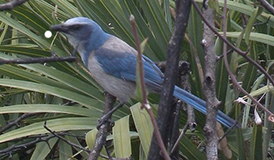Where do the animals go when the sea rises? Learn the probable futures of Florida panthers and other south Florida wildlife in this 5-page fact sheet. Written by Larry Perez, James I. Watling, David Bucklin, Mathieu Basille, Frank J. Mazzotti, Stephanie Romañach, and Laura Brandt and published by the UF Department of Wildlife Ecology and Conservation, it explains how a changing climate could impact wild animals.
edis.ifas.ufl.edu/uw428
Tag: David N. Bucklin
Considerations for Building Climate-Based Species Distribution Models
Climate plays an important role in the distribution of species. A given species may adjust to new conditions in-place, move to new areas with suitable climates, or go extinct. Scientists and conservation practitioners use mathematical models to predict the effects of future climate change on wildlife and plan for a biodiverse future. This 8-page fact sheet written by David N. Bucklin, Mathieu Basille, Stephanie S. Romañach, Laura A. Brandt, Frank J. Mazzotti, and James I. Watling and published by the Department of Wildlife Ecology and Conservation explains how, with a better understanding of species distribution models, we can predict how species may respond to climate change. The models alone cannot tell us how a certain species will actually respond to changes in climate, but they can inform conservation planning that aims to allow species to both adapt in place and (for those that are able to) move to newly suitable areas. Such planning will likely minimize loss of biodiversity due to climate change.
http://edis.ifas.ufl.edu/uw420

